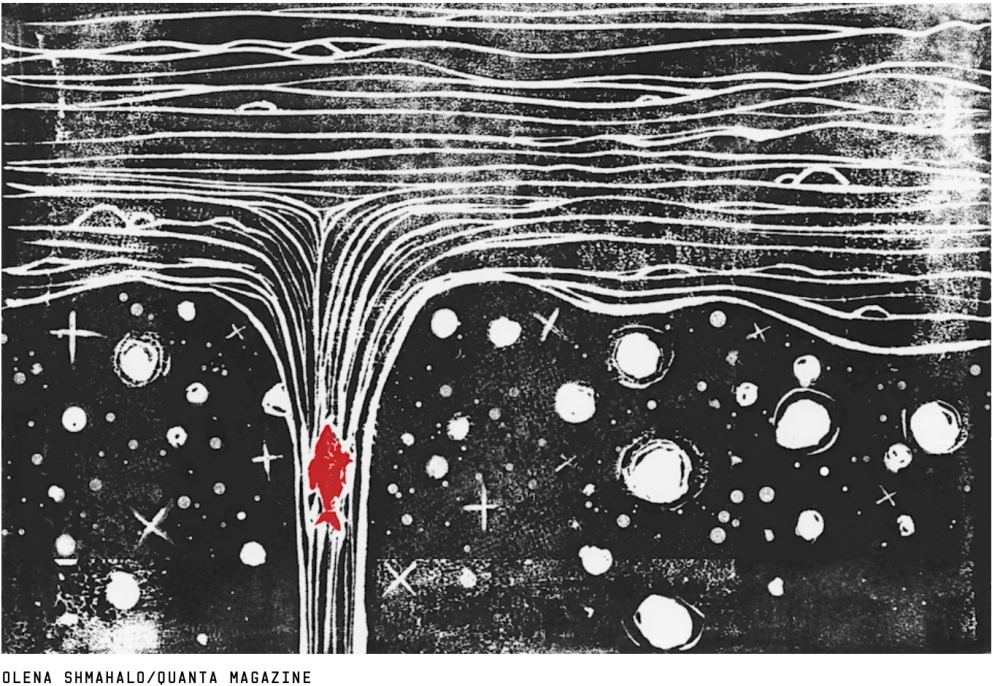What Sonic Black Holes Say About the Real Deal

Can a fluid analogue of a black hole point physicists toward the theory of quantum gravity, or is it a red herring?
NATALIE WOLCHOVER -- SCIENCE
IN A 1972 lecture at the University of Oxford, a young physicist named William Unruh asked the audience to imagine a fish screaming as it plunges over a waterfall. The water falls so fast in this fictitious cascade that it exceeds the speed of sound at a certain point along the way. After the fish tumbles past this point, the water sweeps its screams downward faster than the sound waves can travel up, and the fish can no longer be heard by its friends in the river above.
Something similar happens, Unruh explained, when you fall into a black hole. As you approach one of these super-dense objects, the fabric of space and time becomes increasingly curved—equivalent to strengthening gravity, according to Albert Einstein’s general theory of relativity. At a point of no return known as the “event horizon,” the space-time curvature becomes so steep that signals can no longer climb to the outside world. Within the event horizon, even light is held captive by the black hole’s gravity, rendering black holes invisible.
See full text